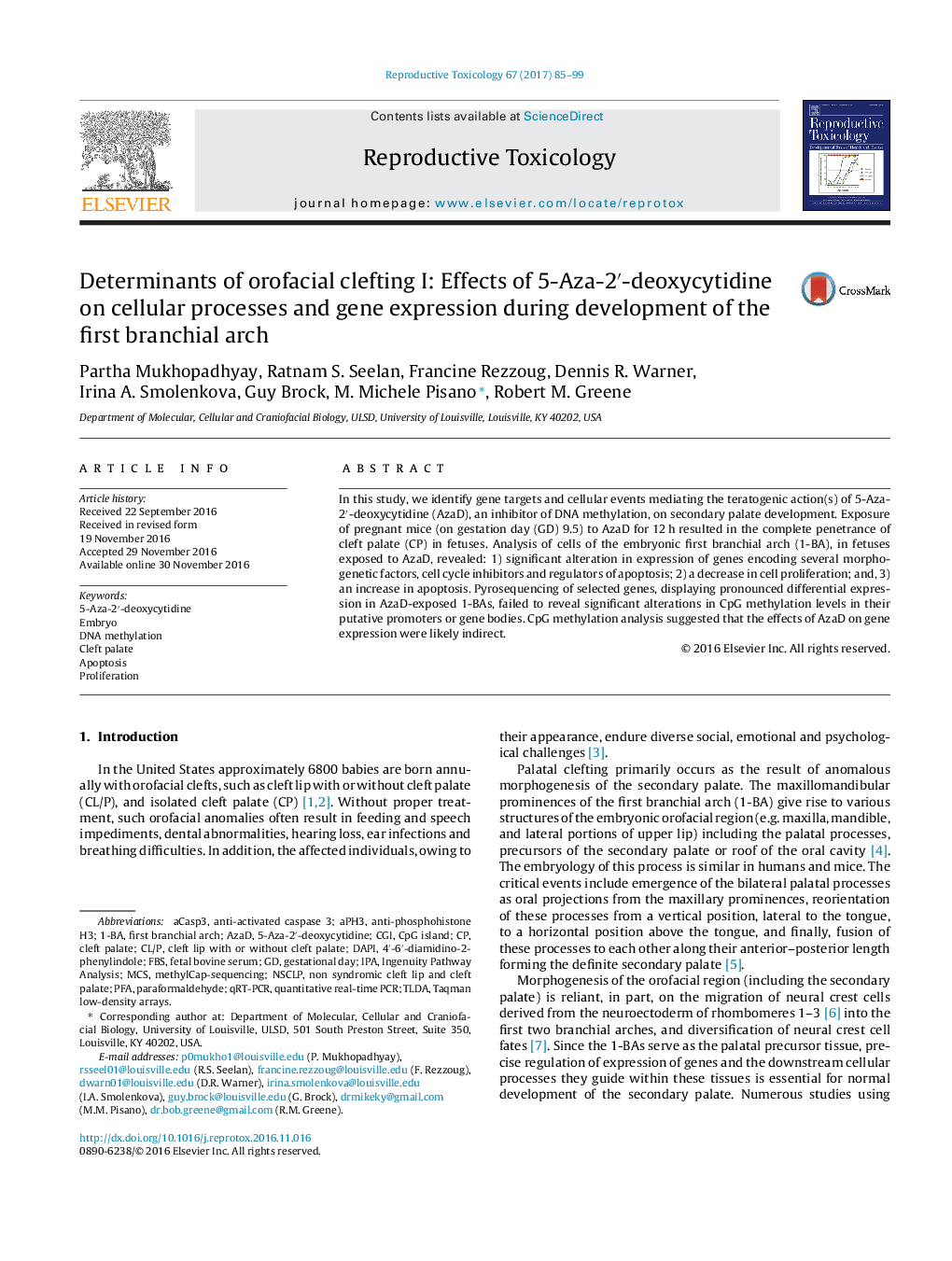| Article ID | Journal | Published Year | Pages | File Type |
|---|---|---|---|---|
| 5561664 | Reproductive Toxicology | 2017 | 15 Pages |
â¢5-Aza-2â²-deoxycytidine (AzaD) exposure induces cleft palate in mouse embryos.â¢AzaD reduces proliferation and induces apoptosis in first branchial arch (1-BA).â¢AzaD-exposed 1-BA tissues exhibit significant changes in gene expression.â¢Changes in gene expression are likely not due to promoter demethylation.
In this study, we identify gene targets and cellular events mediating the teratogenic action(s) of 5-Aza-2â²-deoxycytidine (AzaD), an inhibitor of DNA methylation, on secondary palate development. Exposure of pregnant mice (on gestation day (GD) 9.5) to AzaD for 12Â h resulted in the complete penetrance of cleft palate (CP) in fetuses. Analysis of cells of the embryonic first branchial arch (1-BA), in fetuses exposed to AzaD, revealed: 1) significant alteration in expression of genes encoding several morphogenetic factors, cell cycle inhibitors and regulators of apoptosis; 2) a decrease in cell proliferation; and, 3) an increase in apoptosis. Pyrosequencing of selected genes, displaying pronounced differential expression in AzaD-exposed 1-BAs, failed to reveal significant alterations in CpG methylation levels in their putative promoters or gene bodies. CpG methylation analysis suggested that the effects of AzaD on gene expression were likely indirect.
Graphical abstractDownload high-res image (178KB)Download full-size image
